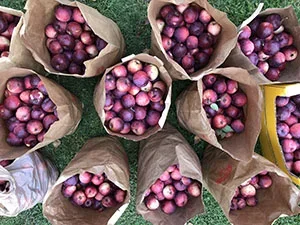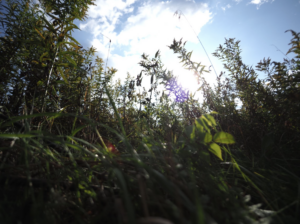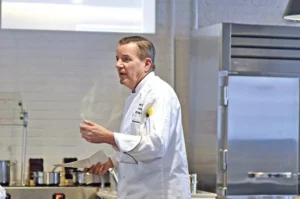“Breaking the Bubblegum Code” is the first part of Lauren Yanase’s three-part series on identity, Full Half: Lessons for a Biracial Asian American. This piece was originally published to asianamericanwriting.com on 2/5/2020.
At 87 years old, there are few things my paternal grandmother does not have an opinion on; fewer still that she is not ready to share. From skirt lengths to savings bonds, rest assured that Bobbie has something to say about that. One topic spared from commentary from my no-nonsense grandma? Her four-year stint in an internment camp as a young teen.
Eleven-year-old Bobbie Kato, daughter of Japanese immigrants, native of Merced, California, existed separately from the wartime Japanese Americans in history books. She had grown up in a universe parallel to that of Executive Order 9066, never in my mind affected by the horror of internment. Barbara Shirota, Mom to two, Grandma to three and Auntie Bobbie to many more, did little to dissuade me of my fantasy of her bubblegum youth.
Her reluctance to speak about her adolescence made it all the more romantic to me. I envisioned shiny saddle shoes, first kisses over chocolate malts, and glass bottle sodas with nickel movies. The reality, I later learned, was not necessarily devoid of those Americana stereotypes, but warped through the lens of shame and fear, behind barbed wire fences and guard towers.
A fifth-grade project on my pre-war immigration legacy made me an involuntary expert on internment. My classmates’ interest revealed my naive understanding, and, embarrassed, I started to push for answers to the unasked questions in my family. With the doggedness of an investigative journalist and the precociousness of a nine-year-old, I set out for The Truth. So began the nearly decade-long journey of relearning Bobbie Shirota (nee Kato)’s past. After avoiding the topic for half a century, she and her siblings were more susceptible to a granddaughter or a great-niece’s curiosity. Still, even that fell short of convincing them to talk openly about their experience. Their careful, coded recollections compel me to remember their story, and their silence commands that I not let it be forgotten by time.
I cannot and will not fault Bobbie’s resistance to see her youth as a cautionary tale from the past. The liability of her lost childhood now mirrored in the fate of others lies not only in the hands that directed it but also in those who did not protest it.
Last year, news broke that the federal government was holding immigrant children in detention centers built on the bones of a Japanese ‘relocation center’ used during World War II. I asked Grandma what she thought of the report. No response. Finally, she briefly opined on the general horrors of family separation and locking up kids. Then she asked if I had found a job yet.
This year, the Japanese American Citizens’ League was among the first to speak out when Iranian Americans were detained and interrogated at the Canadian border. I know if I ask Grandma, she will say what she always says: that it’s not right what is happening, that they are Americans, Lauren, and more importantly, people. Then she will ask if I am seeing anyone.
I can and should be savvy to my grandma and her peers’ quiet pleadings to our generation. She asks if I’m registered to vote (then advises me to double- and triple-check). She tells me to read today’s paper and notes that the headline is “kind of interesting, hmm?”. She sends books and documentaries and notable names who wrote or performed or talked on the internment camps, the Asian American experience, the plight of immigrants.
If I let myself listen, I find that she has a lot to say, after all.

Lauren Yanase is a first-year student with a passion for strong coffee and environmental education. When not playing in the woods, Lauren enjoys studying the interplay between history and storytelling through a multi-medium platform. Her award-winning documentary, Shikata Ga Nai: An Inconvenient American has been shown at cultural and historical events, awareness seminars, and in classrooms across the West Coast.
Section Editor of Beyond Bennington





Be First to Comment